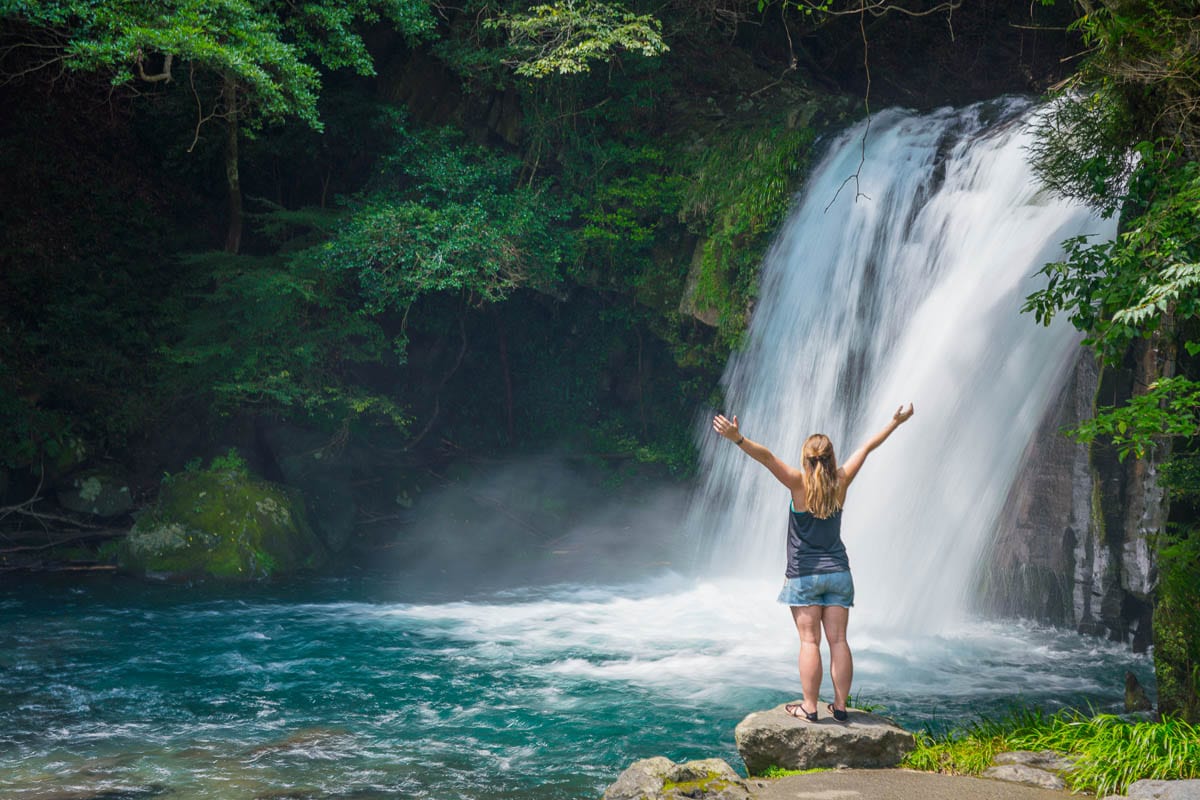From the lights of Tokyo, to nature on the Izu Peninsula and the pretty city of Kyoto, this 7-day Japan itinerary offers the perfect introduction.
Planning a seven day adventure through Japan? Or are you looking to move to this amazing country? You’re in for an unforgettable experience.
According to Preply, Japan offers travellers so much, including safe cities, history, culture, job opportunities, and beautiful landscapes. As you travel around for a week, you’ll get a really good overview of the destination and what makes it special.
To really make the most of your trip, having a bit of Japanese under your belt can go a long way. Understanding the language and a few cultural dos and don’ts will help you to connect with locals and feel more at ease. Preply offers a range ofJapanese language classes. The focus is on practical communication, useful phrases, and cultural etiquette – everything you need to navigate Japan with confidence!
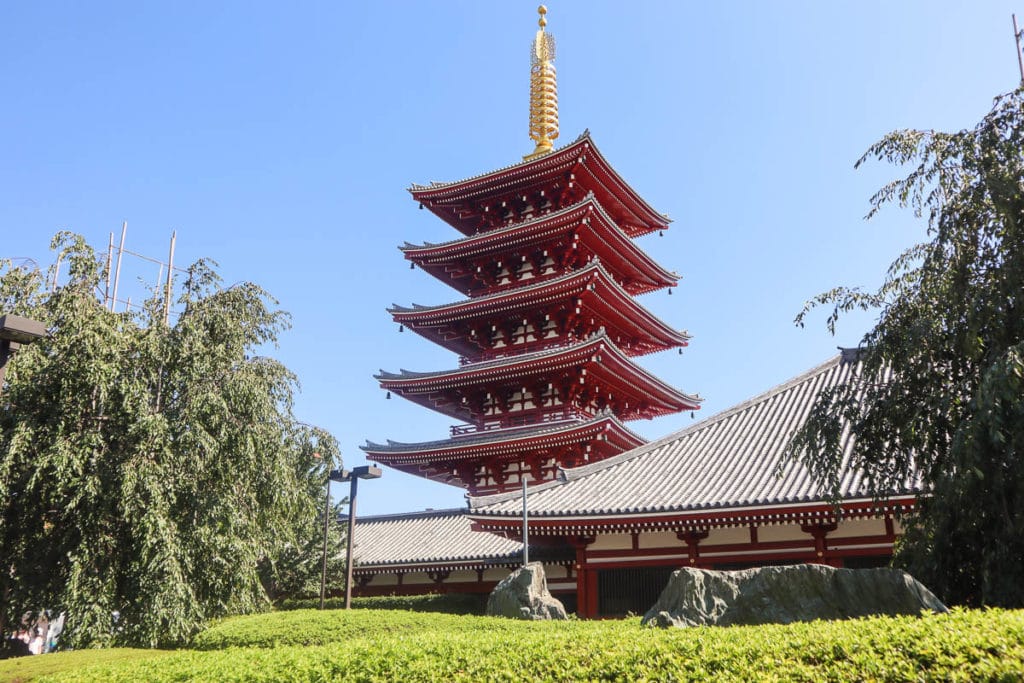
I’ve visited the country several times, exploring numerous regions and sampling a variety of activities. I enjoyed buzzy days out in Tokyo, eaten my way around Kobe and enjoyed getting off the beaten track in the Izu Peninsula. I’ve hiked a part of the Kumano Kodo in the Wakayama Prefecture (the dual pilgrimage shared with Spain’s Camino de Santiago), enjoyed drives along the beach in Ishikawa, and visited the historic castle in Himeji.
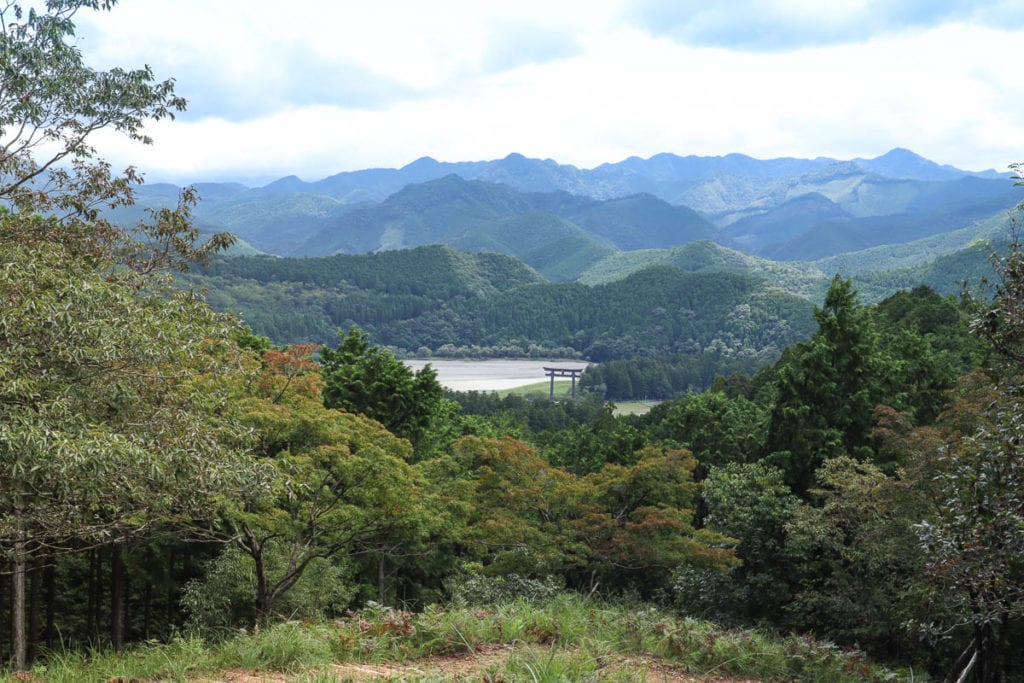
Before my trip, I even considered taking Japanese language classes on Preply. English isn’t spoken everywhere, so having some basic Japanese is a good idea.
This is the leading platform in Japanese language education, and offers personalised Japanese language classes. After all, konnichiwa and arigato will only get you so far!
Before you travel, I’d recommend reading my guide to visiting Japan for first time visitors. It’s got lots of travel tips, so you don’t make any cultural mistakes!
I should mention that I’ve only visited Honshu so far – the largest of Japan’s four main islands. But, this is the place to visit on your first trip to Japan. It’s where you’ll find the cities of Tokyo, Kyoto, Kobe, and Osaka. Plus, it’s home to some of Japan’s most picturesque landscapes.
So, come with me as I show you how to spend 7 days in Japan!
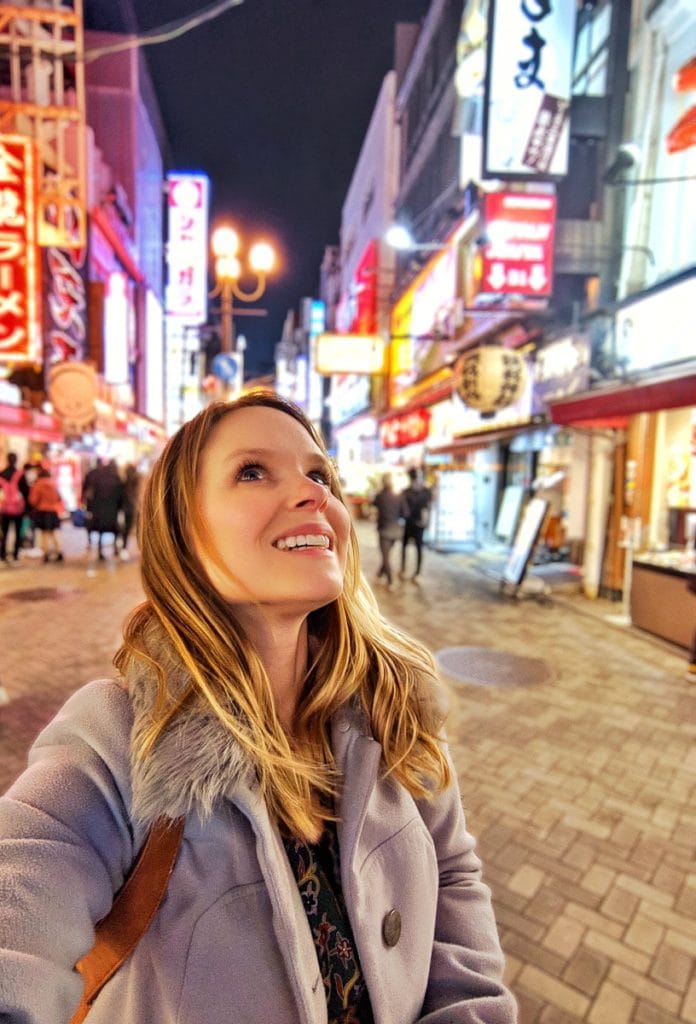
The Perfect 7-Day Japan Itinerary
As a quick overview, here’s where you’ll be visiting on this whistle-stop tour of Japan. All of these destinations are reachable using Japan’s public transport network, including those famous Shinkansen (bullet trains).
- Days 1 & 2 – Tokyo
- Days 3 & 4 – Izu Peninsula
- Day 5 – Kyoto
- Day 6 – Kobe
- Day 7 – Osaka
How to travel around Japan
These destinations are easy to reach using Japan’s train network. I’d suggest you pick up a Japan Rail Pass on arrival in Japan. There’s one that lasts seven days – ideal for this one week Japan itinerary!
You’ll be hopping on and off trains every day, so it makes things simple and means you’re not constantly buying tickets. It should work out more cost-efficient too.
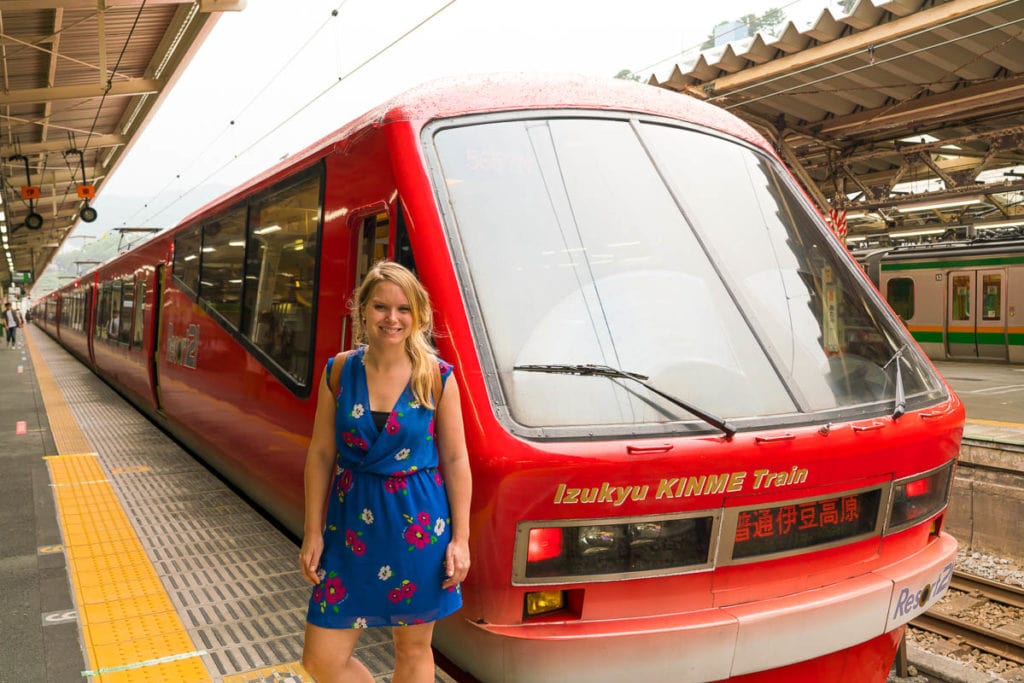
You simply purchase the pass, then receive a voucher. When you arrive in Japan, you can exchange this at the airport or a major train station. It’s valid on most trains, including a lot of the Shinkansen bullet trains, the Tokyo monorail from the airport and local buses. How great is that?!
The Perfect 7-Day Japan Itinerary
Days 1 & 2 – Tokyo
Our week in Japan starts in the vibrant capital, Tokyo. This busy city offers so much to tourists, with exciting museums, great food, history and a cosmopolitan vibe. It may feel like a bit of a culture shock at first, but you’ll soon adjust.
There are a million things you could choose to do during your two days in Tokyo. Here are a few of my top picks.
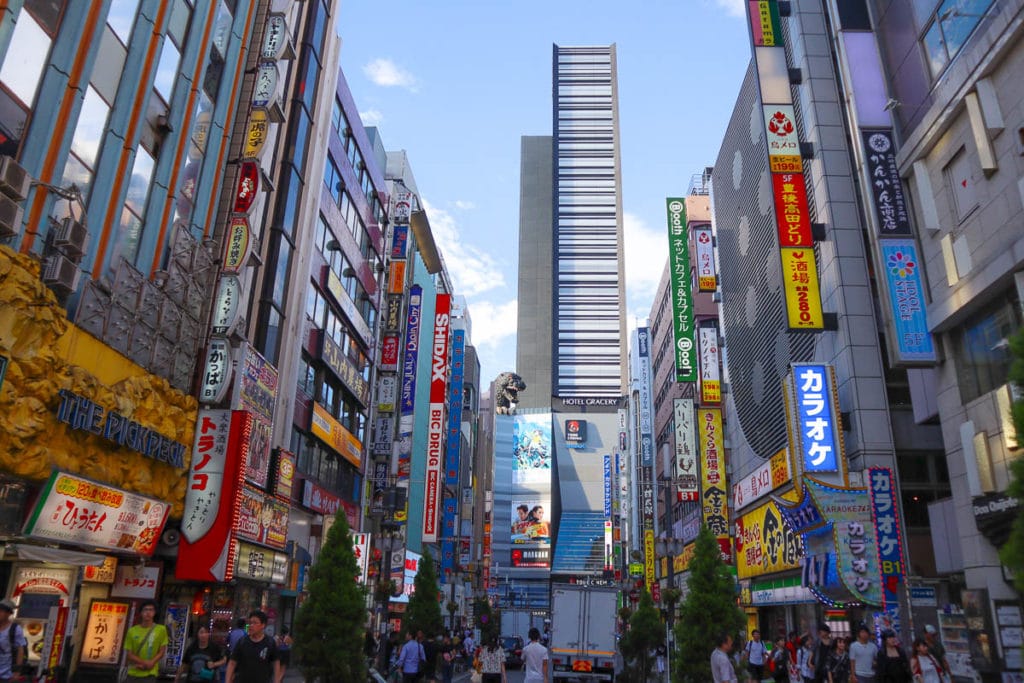
Wander the streets of Shinjuku
A lot of tourists base themselves in Shinjuku. You’ll be immersed in the bright lights and fast pace of life straight away. It’s fun, exciting and a little overwhelming at times! I think it’s the perfect place to start your tour of Japan. You’ll find lots of great food around here. You could slurp your first bowl of ramen, enjoy a Japanese BBQ (yakiniku) or devour some of the country’s finest sushi! Come on, the food is a huge reason to visit Japan (well, it was for me anyway!)
Take a food tour of Asakusa
This Tokyo food tour was a highlight of my time in the city. I always love food tours, as they not only introduce you to a new cuisine, they also give you insights from a local about what a destination is really like.
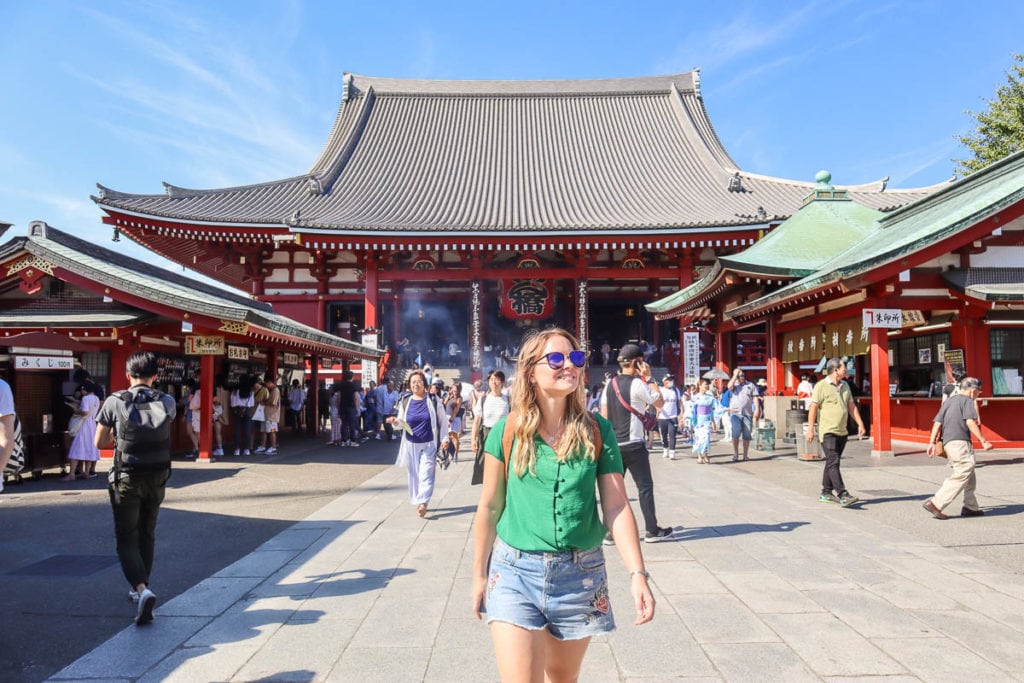
Asakusa was once filled with gangsters, geishas, writers, artists, and beggars. It had a reputation of being a little rough, but was transformed post-war and these days is a desirable place to be. It’s picturesque with temples, shrines and gardens. Plus, it’s famed for its lengthy street market that attracts tourists every day.
We enjoyed lots of authentic, local experiences on the tour, tasting unique Japanese ingredients. We learned about melon bread, special spices and pickles. Then, we sat down to a main meal featuring wasabi, noodles in broth, chicken, rice, miso soup, tofu and pickles! It was such a wonderful way to get to know more about the city.
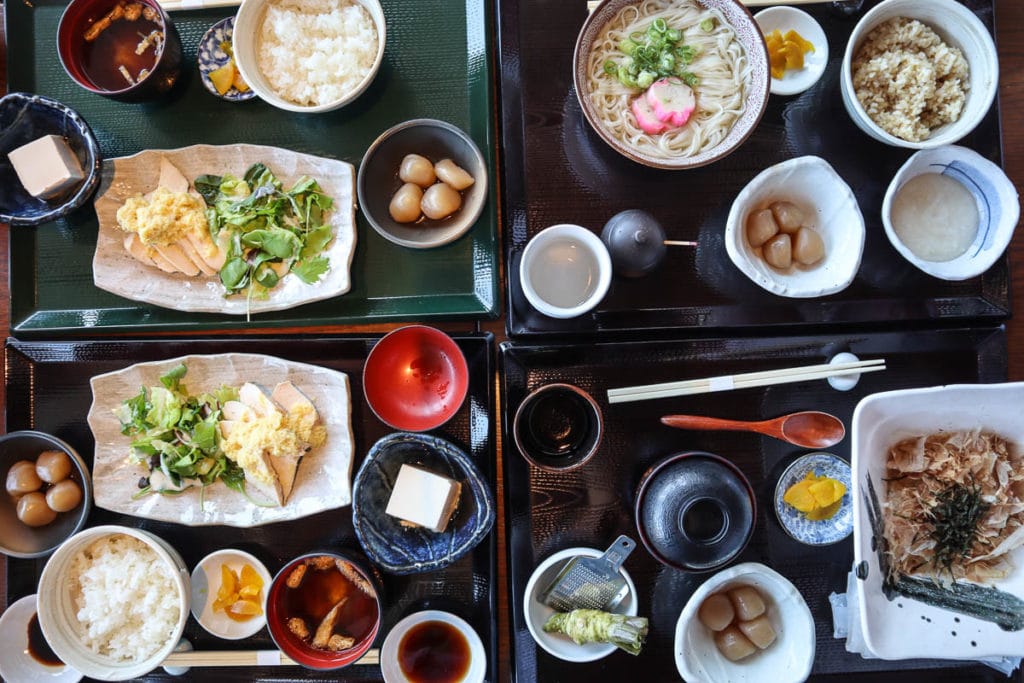
Soak up the colourful neighbourhood of Harajuku
A lot of you will already be familiar with Harajuku culture. It’s known for being playful, colourful and high energy. Well, the region where it originates is all of that and more! The fashion (often referred to as ‘kawaii’) features lots of bright colours, child-like styles and often a range of hair colours, too!
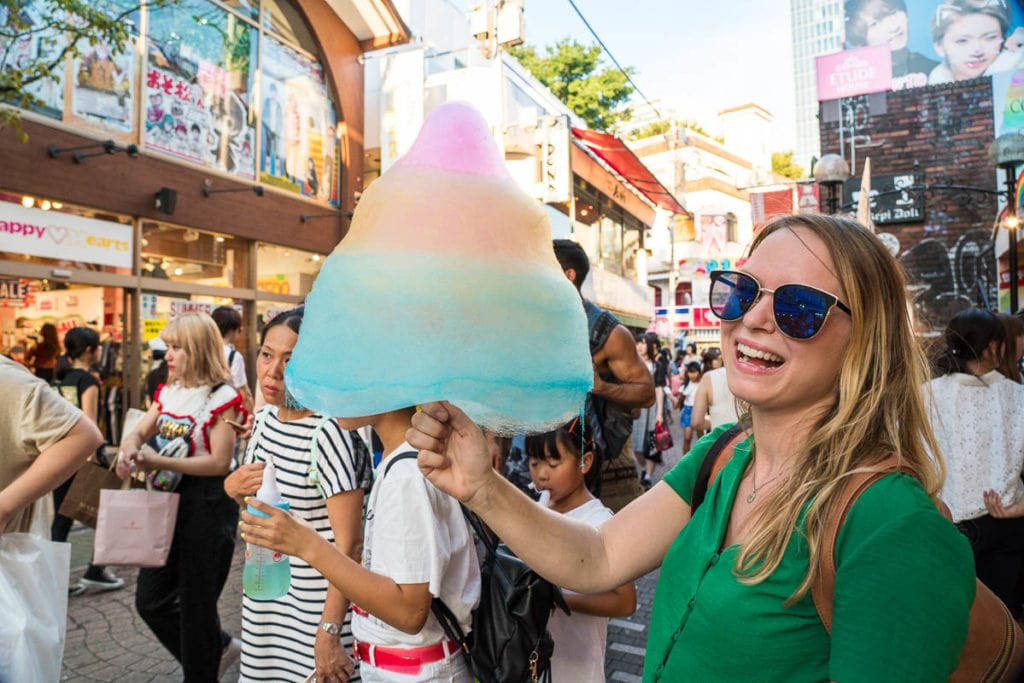
As well as the quirky fashion and colourful setting, Harajuku is a great place for wacky foods. Head to Takeshita Street and grab a rainbow candy floss, candy apple, tunnel potato or a colourful cheese sandwich! It’ll definitely make you smile! We explored on our own, but if you want to some guidance, this Harajuku food tour takes you to some of the most fun places.
Spend an evening in Tokyo’s Golden Gai district
Tokyo is definitely a city of contrasts. One minute you’re at one of the world’s busiest pedestrian crossings, the Shibuya Crossing, the next you’re visiting historic temples. One of my favourite experiences was bar-hopping around Golden Gai – a maze-like neighbourhood with tiny bars, serving just a few customers. They look old-fashioned, and the area had a bit of a speakeasy feel.
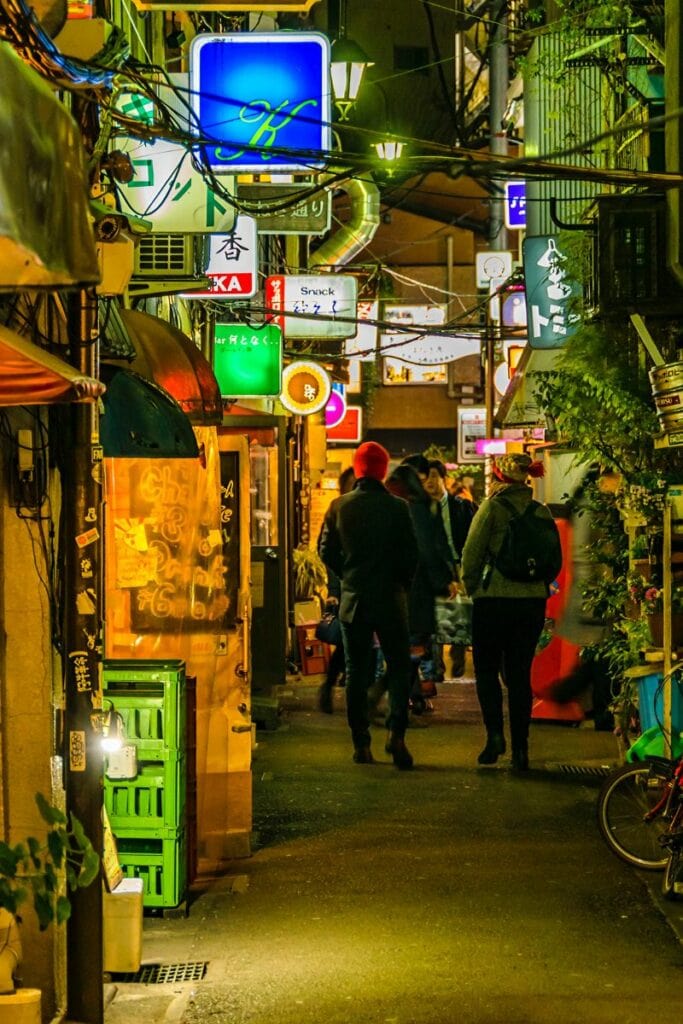
At first we felt a little intimidated as they looked very local. But, we discovered a few that were a little more geared up for tourists. I’d recommend trying a highball – a popular drink in Japan made from whisky, soda or ginger ale, and a slice of lemon.
Days 3 & 4 – Izu Peninsula
Now it’s time to escape the busy city and escape to the coast and countryside. The Izu Peninsula is southwest of Tokyo, and really easy to reach from the city.
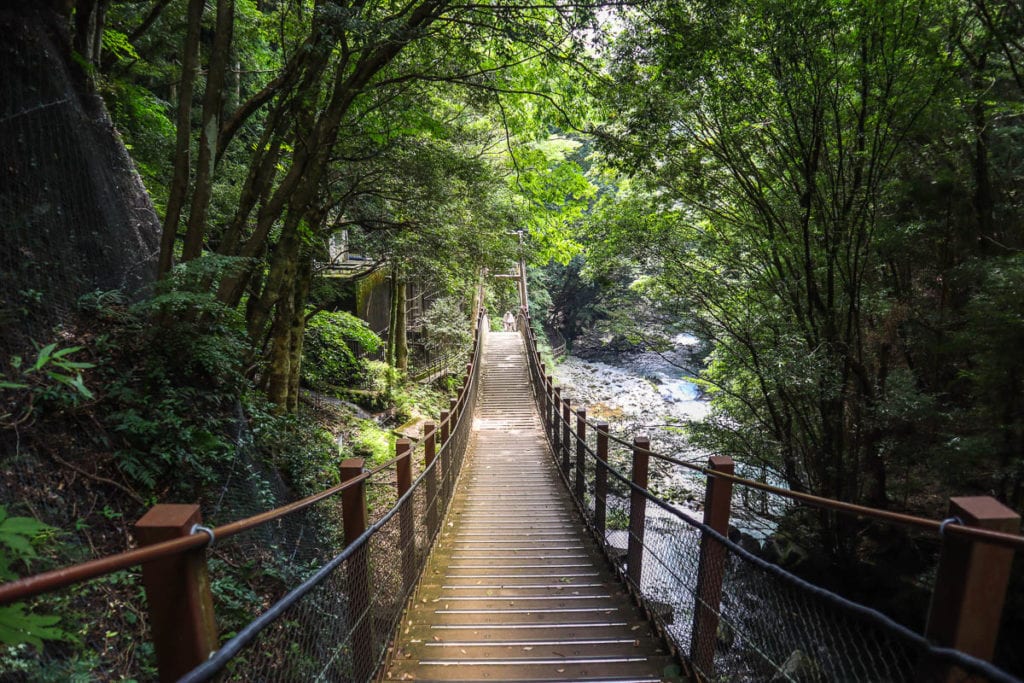
It boasts volcanic origins, so you’ll find rugged coasts, unique beaches with sea caves, as well as mountains, countryside and bamboo forests. With volcanic roots come hot springs, which the Japanese utilise in the form of onsen (a Japanese hot spring bath) – a must if you can! We really enjoyed how authentic this region felt. It wasn’t touristy. It had a great mix of natural wonders, temples, onsen, ryokan accommodation (traditional Japanese inns) and local food (soba noodles and wasabi).
Depending on where you want to visit, you can hop on a Shinkansen from Tokyo to Atami Station, or head to Mishima Station and take a 30-minute train to Shuzenji Station. To reach places further south, you’ll need to use a mix of local buses and trains, or book a taxi.
Here are a few things I’d recommend doing in the Izu Peninsula.
Visit Kawazu Nanaduru Waterfalls
If you can figure out a route, I’d recommend planning a day at these impressive waterfalls, which are located to the south of the region. There are seven in total, winding along a tranquil river trail. You can trek from start to finish, which takes around two hours. The trail ends at Nanadaru Onsen Resort, where you can relax in several thermal pools, with an incredible view of the largest waterfall. It was a stunning place for photography, and to connect with Japan’s natural wonders.
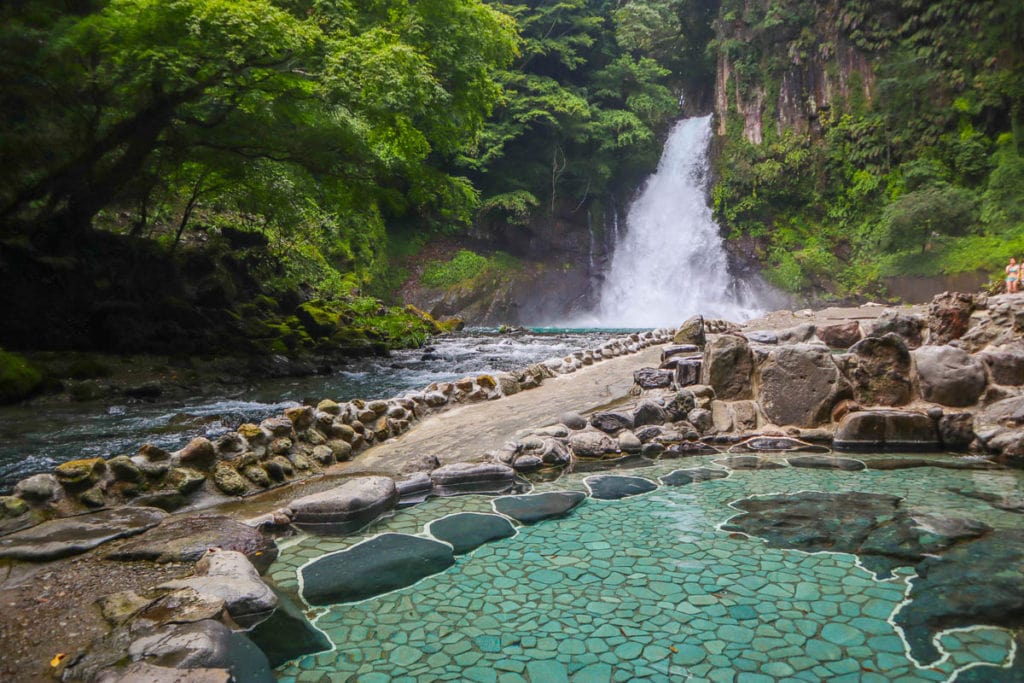
Explore Shuzenji Onsen
There are plenty of towns in Japan that are famed for their hot springs. Shuzenji is one of the prettiest. As you walk around you’ll feel like you’re seeing all of the beautiful things about Japan in one go. With a river meandering through the centre, historic temples dotted around and a striking bamboo forest, it’s somewhere you’re guaranteed to take lots of photos!
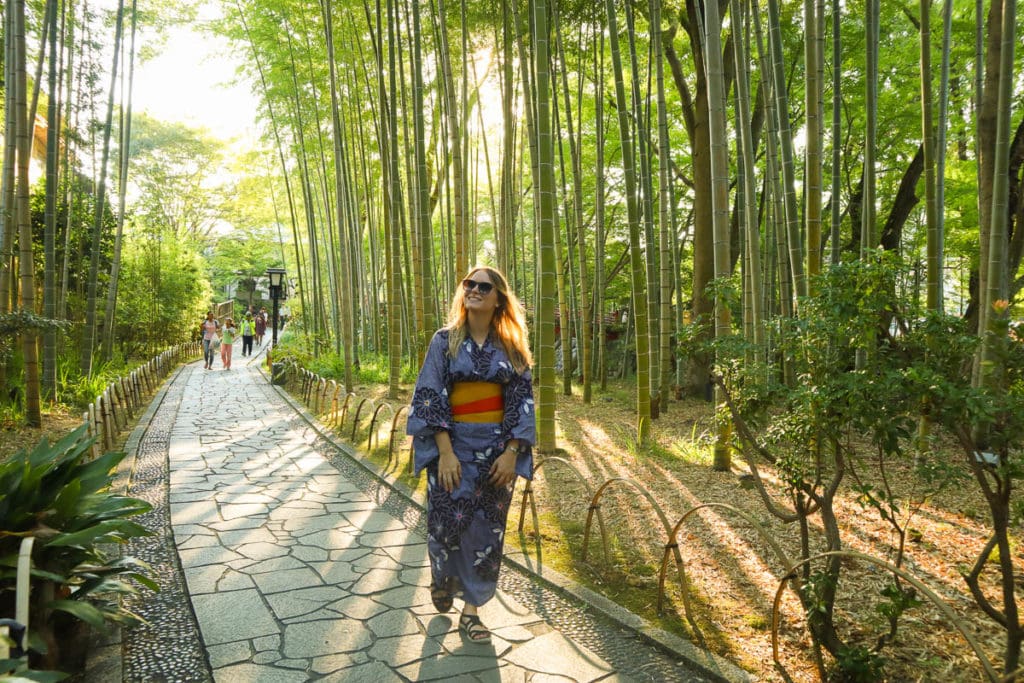
We checked into Arai Ryokan – a traditional Japanese hotel which offers a really authentic experience. We wore yukatas (Japanese dressing gowns) and dined sitting on the floor of our room. The staff laid out a huge feast of dishes, as is standard at a ryokan. I can’t say that everything was delicious (!) but it was a great way to taste the real food of Japan.
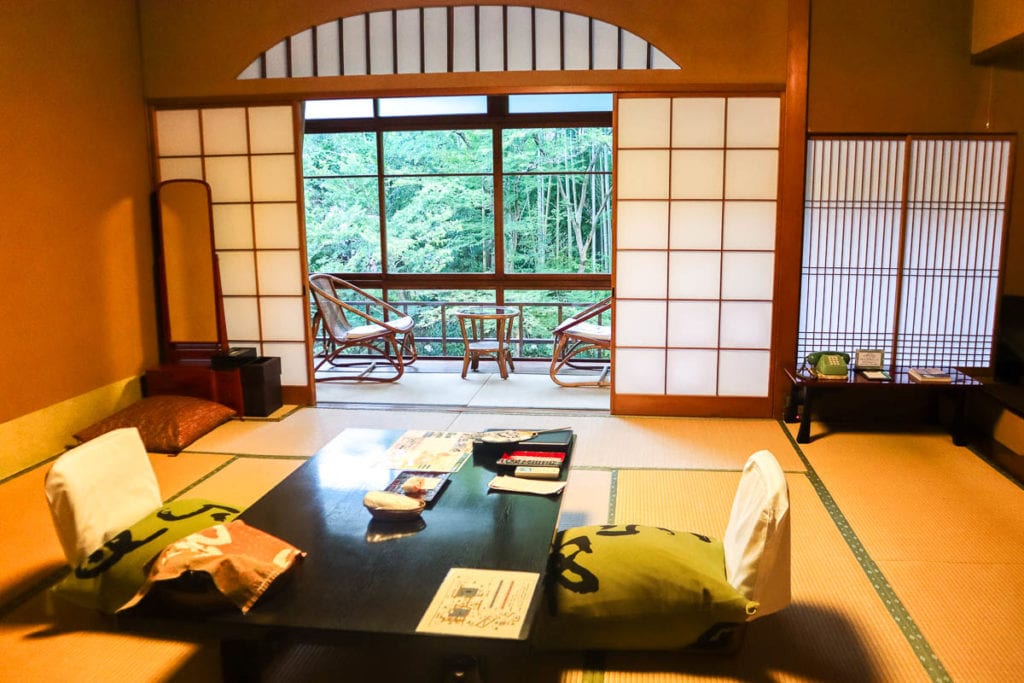
Visit the amazing coast in Atami
Did you know the coast just outside of Atami is often referred to as the Amalfi Coast of Japan? You’ll see towns dangerously close to sweeping cliff faces, sparkling ocean and some of the best views in the region.
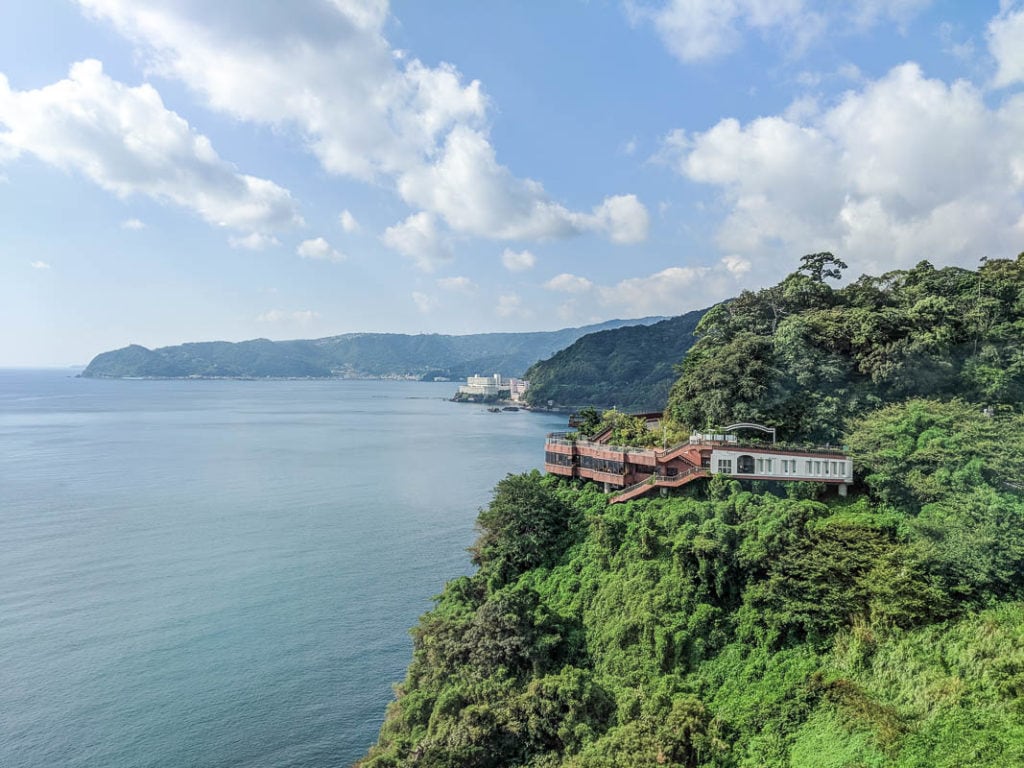
Eat lots of wasabi
How do you handle wasabi? Well, if you’re visiting this region, get your tastebuds ready! The green Japanese horseradish is the most famous local ingredient and you’ll see it at most restaurants. There are dishes dedicated to it, such as wasabi with rice or with soba noodles.
The fun comes from the fact you have to grate it yourself… which also means you’re in control of not blowing your head off!
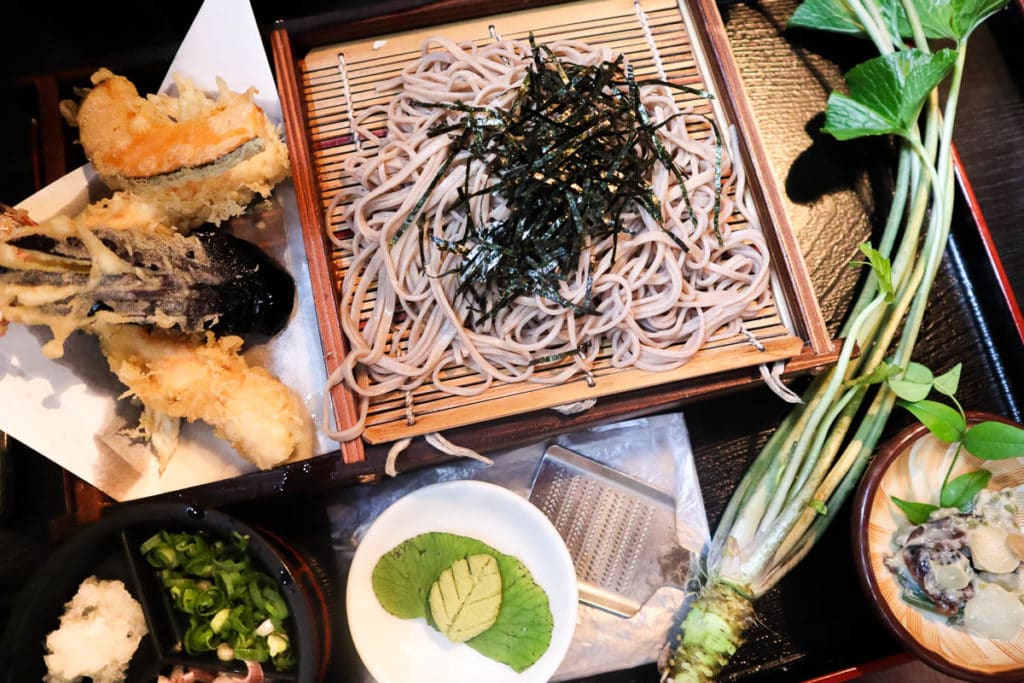
Day 5 – Kyoto
From the Izu Peninsula, it’s time to head back to city life. From Atami, you can catch the train to Mishima or Odawara, then hop on a Shinkansen to Kyoto. It takes around 1 hour 50 minutes, so I’d set off early to maximise your time in Kyoto.
Kyoto is a cultural city, with ancient temples, sacred traditions and a lively food scene. It’s particularly popular during cherry blossom season, which usually falls between March and April. It’s also stunning during autumn, when the leaves turn red.
There’s a lot you could do during your day in Kyoto. As this is a whistle-stop tour, I’d probably recommend wandering around on foot and soaking up the city. You’ll want to visit Fushimi Inari Shrine. No doubt you’ll have seen photos of this before. There are thousands of red torii gates to walk through, leading to a pretty woodland area, a shrine and Mount Inari. To summit the mountain will take you a few hours, but you might just want to stroll along for a bit before turning back.
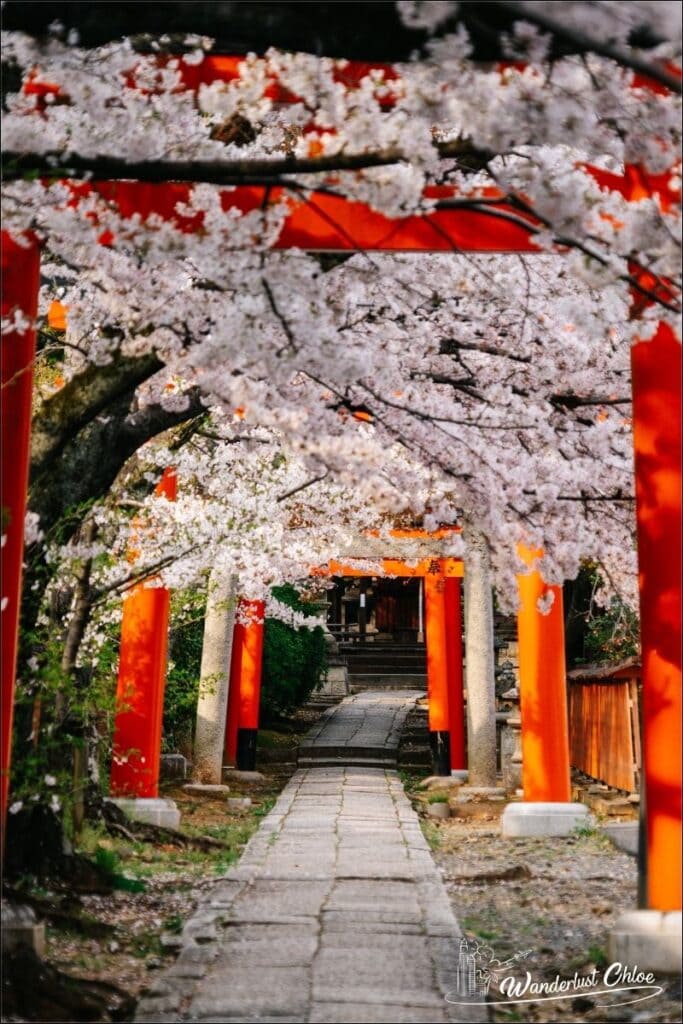
A stroll through Arashiyama Bamboo Forest is also a must. It takes around 30-minutes by train from the centre of the city. I’d recommend planning your visit for early morning or late afternoon to avoid crowds.
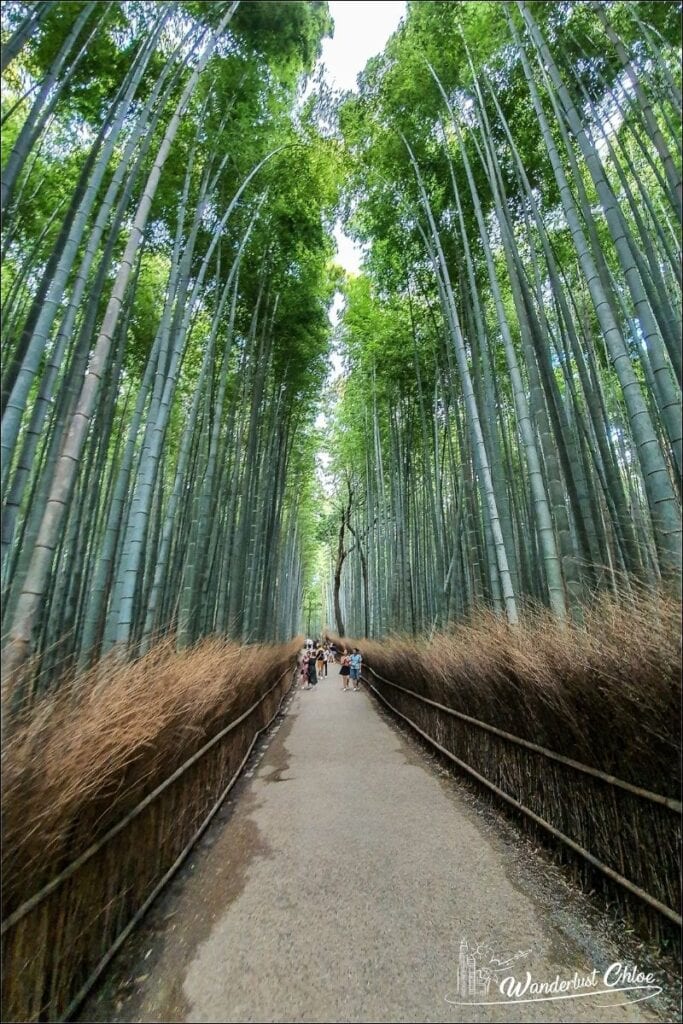
Head to the Gion District and you’ll feel like you’ve turned back the clock. This photogenic area is full of old wooden houses and paper lanterns, and is known for Kyoto’s geisha culture. It’s also a great place to visit a traditional teahouse. If you’ve seen photos of tourists wearing kimonos in Kyoto, they were probably strolling around this area! It’s a popular thing to do!
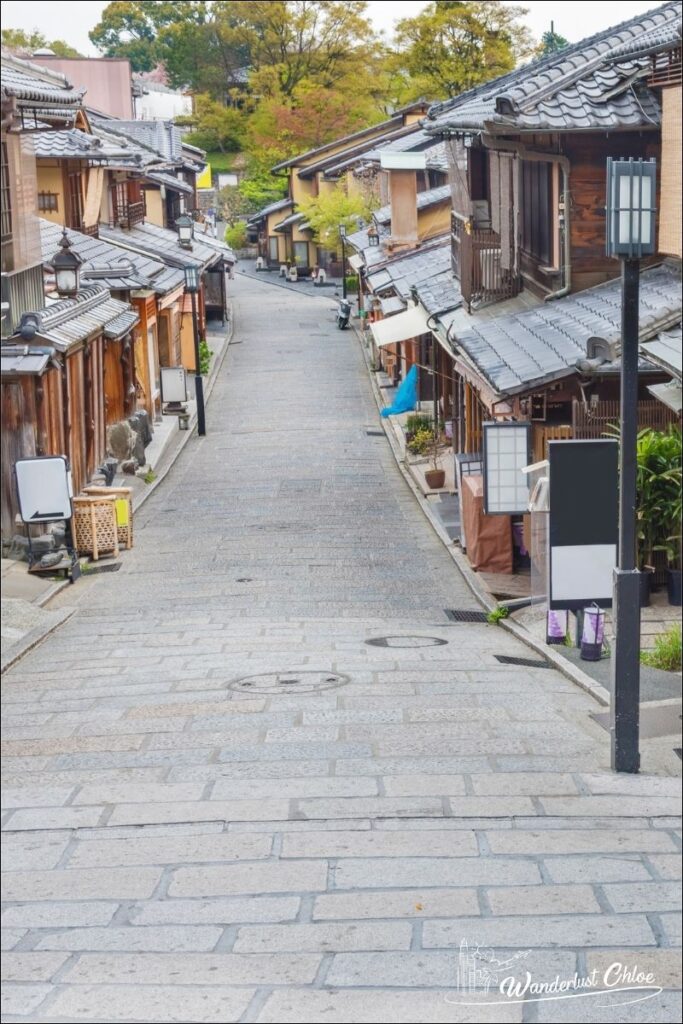
You could also head to the north of the city to see Kinkakuji (Golden Pavilion). It’s quite a sight, located on the banks of a lake, with the top floors covered in gold leaf.
Day 6 – Kobe
It’s the penultimate day of this 7-day Japan itinerary, and it’s time to hop back on the train (I told you you’d use that Japan Rail Pass a lot!) The fast train from Kyoto to Kobe Sannomiya Station takes just 28 minutes.
Kobe is often overlooked on Japan itineraries, but I really wanted to include it as I enjoyed my time there. Unlike Tokyo, Kyoto and Osaka, Kobe feels like more of a local Japanese city! It’s not filled with tourists, it’s a little cheaper perhaps, and has lots to enjoy. There are also some amazing day trips from Kobe if you have a bit longer.
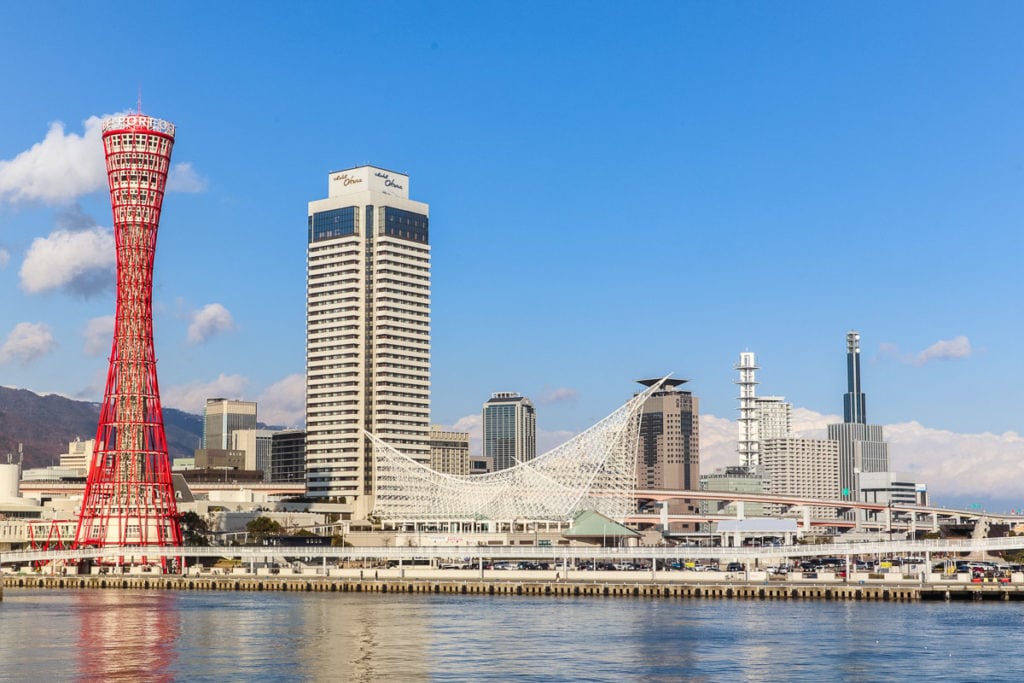
In terms of things to do, my top recommendation if you eat meat is to try some Kobe beef. If you didn’t know, Kobe beef is a type of wagyu beef known for its high level of fat marbling. It’s a soft kind of fat, with a low melting point, so it cooks quickly, stays very soft and tender and has a rich, indulgent flavour. It basically melts in your mouth.
You’ll see Kobe beef served all over the city, and while it’s more expensive than the average meal, you’re only here once, so definitely try it! I enjoyed a meal at Kobe Plaisir, where they serve a little tasting menu with 100g of Kobe beef included, for just over £50.
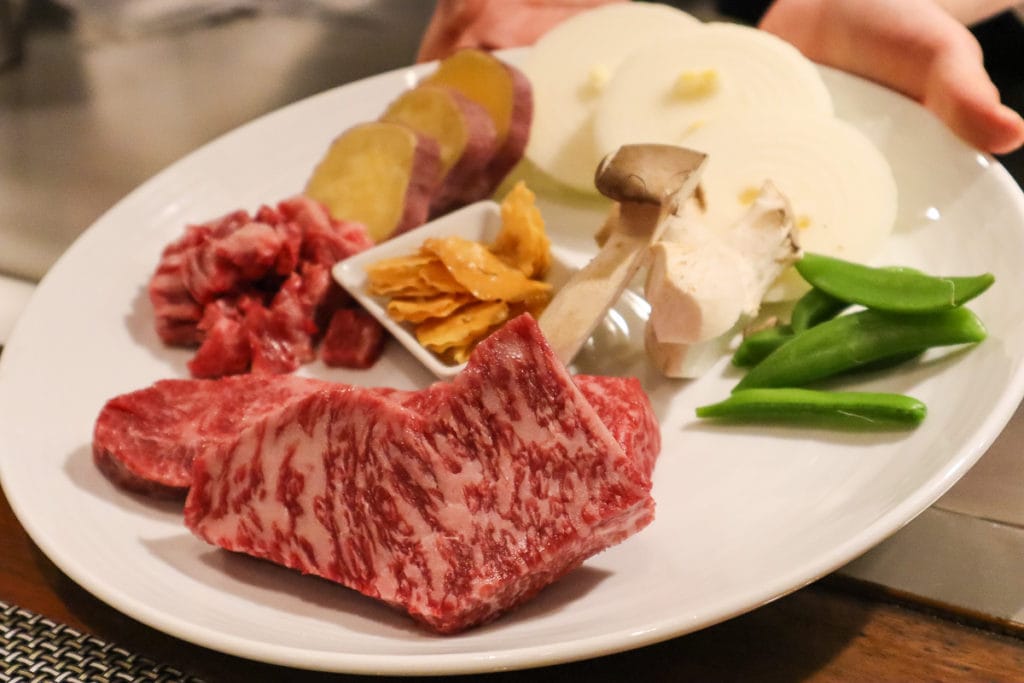
For a slice of nature, hike up to Nunobiki Falls. It’s surprisingly close to Shin-Kobe station, so is easy to fit into a day in the city. There are a few waterfalls, a lovely trail, plus you can hop on the Shin Kobe ropeway (cable car) if you get tired!
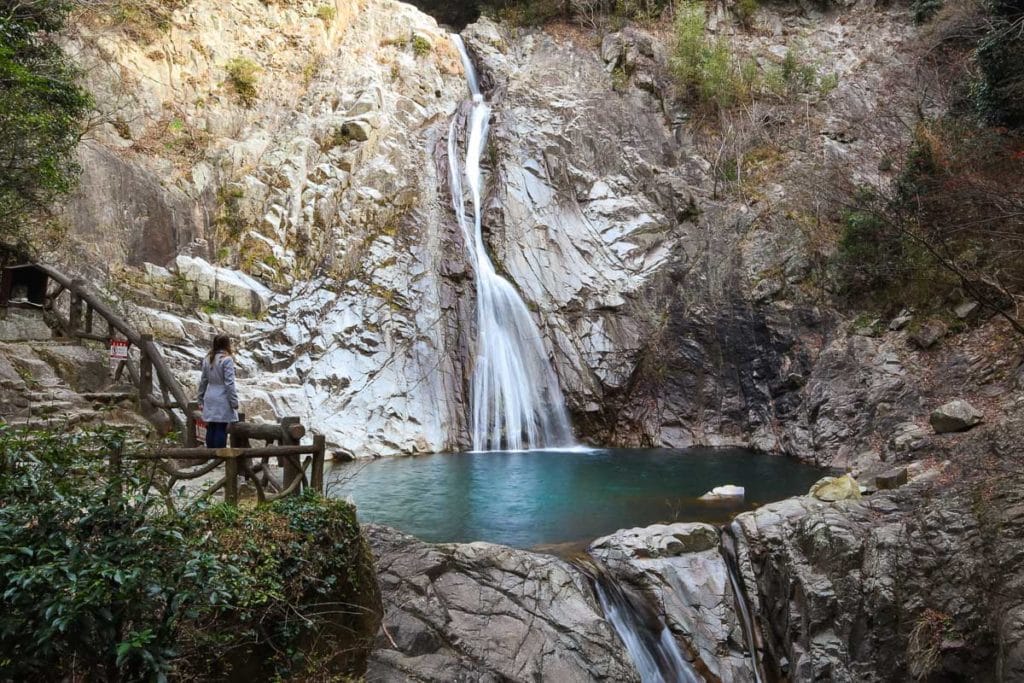
This is a port city, so you could catch a boat around the harbour, take a stroll around Merikan Park, visit the hyper-modern Kobe Maritime Museum or take in the views from Kobe Port Tower.
Day 7 – Osaka
This fun-packed whistle-stop tour of Japan is coming to an end. Osaka is just a 20-minute train ride from Kobe, so you’ll have plenty of time to enjoy the city. I’ve visited Osaka on two different occasions and have very fond memories of the city. It’s vibrant, playful, has great food and a lively spirit!
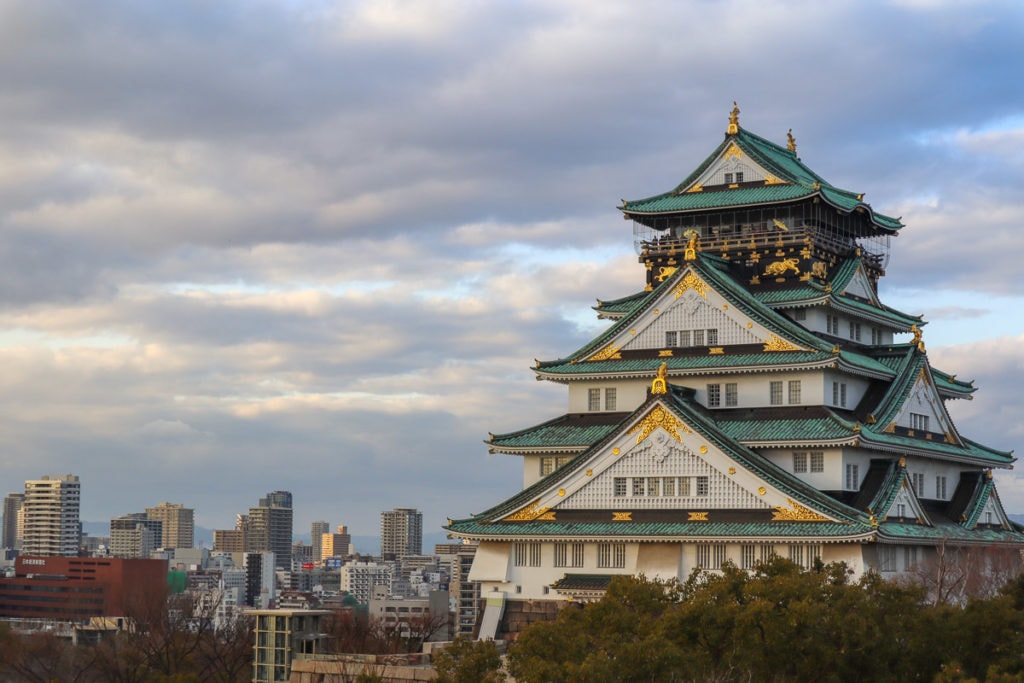
I’d recommend starting your day at Osaka Castle. The current building dates back to 1931, and surprisingly it survived the WWII air raids that hit areas very close by. You can go inside and also go on a boat around the moat. For a bit of fun, you can even book a samurai experience!
Dotonburi is lively all day and all night. There’s a canal running through the main street, which is lined with neon-clad restaurants and shops. A lot of food places have animatronic creatures attracting your attention – it’s quite a sight! While it’s very touristy, I just loved the energy!
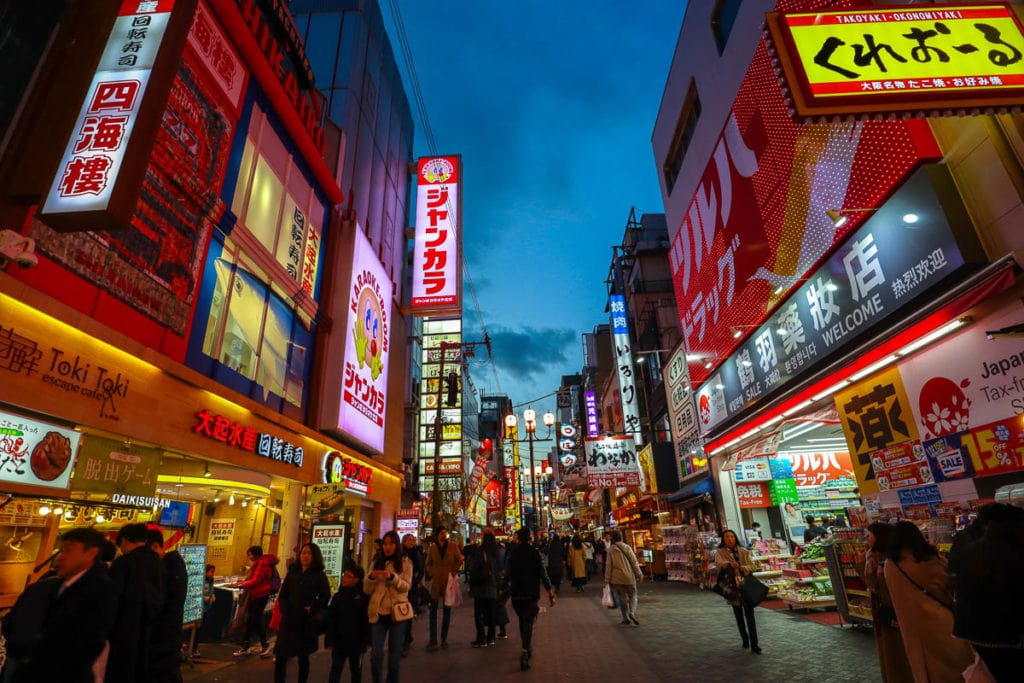
I’d recommend trying to some food around here. Some of the savoury items you’ll see include: takoyaki (octopus dumplings), yakitori (grilled meat on skewers), gyoza (filled dumplings), kushikatsu (deep-fried breadcrumbed meat or vegetables covered in a tangy sauce), okonomiyaki (cabbage pancake) and mitarashi-dango (rice balls covered in sweet soy). For a sweet fix, try taiyaki (sweet vanilla fish-shaped pancake) or a few flavours of mochi (a chewy rice cake, usually with a jam-like filling).
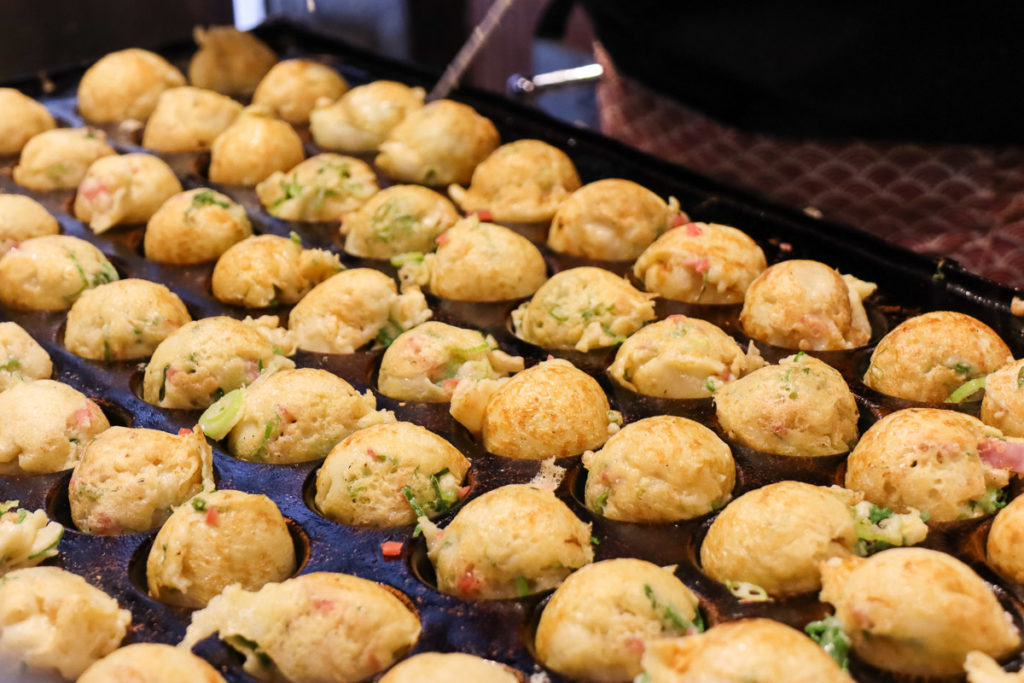
Osaka is also a great city for shopping. If you want to take some souvenirs home, you’ll find quirky Japanese items, foodstuffs, ceramics and more.
I hope you have an amazing week in Japan! It’s one of my favourite countries in the world. It offers so much variety in terms of food, landscapes, culture and entertainment.
Looking for more travel inspiration for visiting Japan? Check out these posts:
- A guide to travelling in Japan (and how to avoid awkward situations)
- An incredible Tokyo itinerary
- A travel guide to visiting the Izu Peninsula in Japan
- A travel guide to visiting Wakayama in Japan
- 18 Things To Do In Kobe, Japan
- The Best Day Trips From Kobe, Japan
- Everything you need to know about visiting an onsen in Japan

